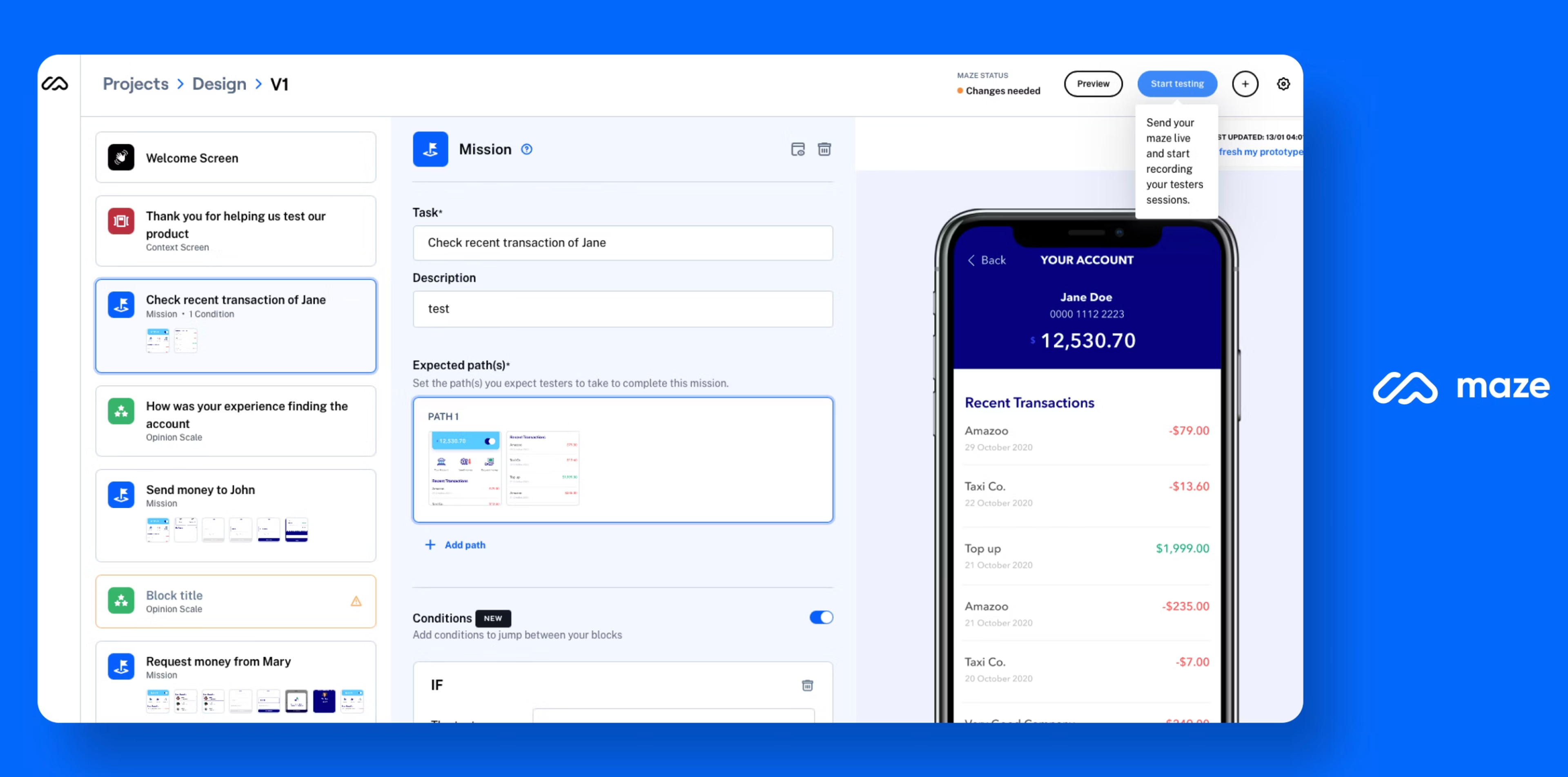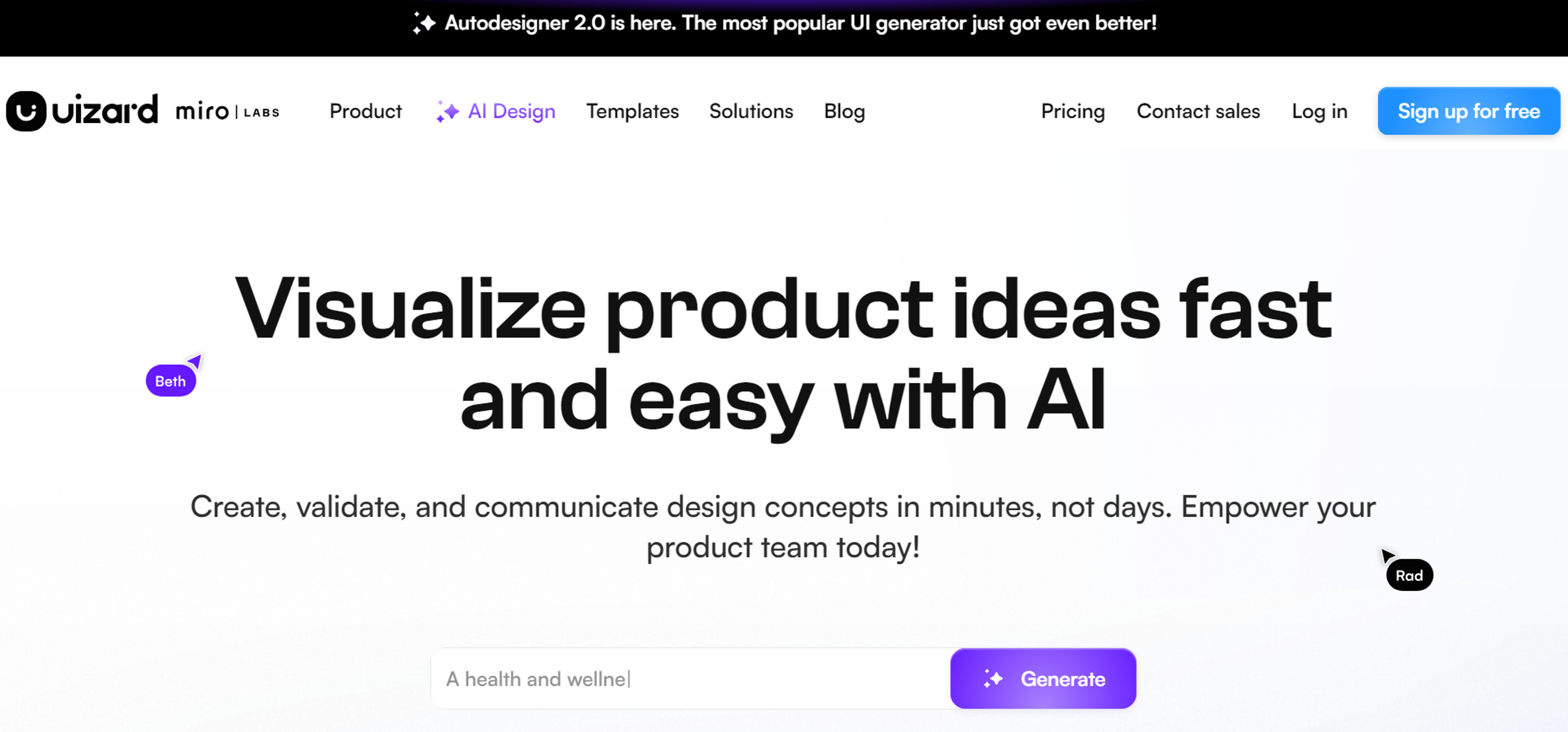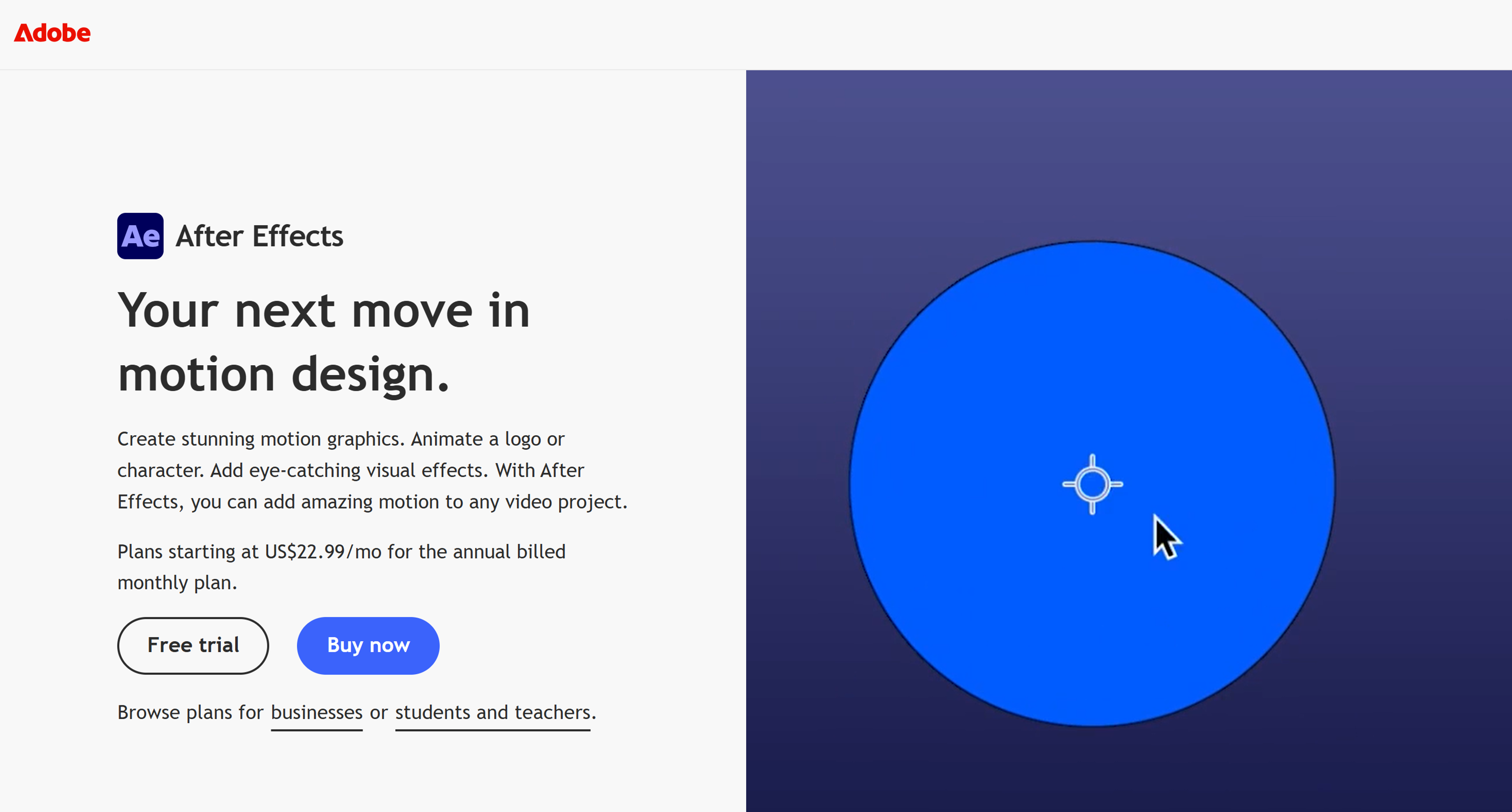In today’s fast-moving world of UI and UX design, having the right tools can make all the difference. Great design isn’t just about talent — it’s also about using smart, powerful tools that help you work faster and think more creatively. Successful teams often utilize design collaboration tools to streamline feedback, share updates, and ensure consistency across every step of the process.
This article introduces the top design collaboration tools for 2026. These tools can improve how you design, making your process smoother, quicker, and more innovative.
Design tools change often. New ones appear as designers face new challenges. To stay ahead, you need to keep up with what’s new. Learning about the latest tools helps you stay sharp, leverages design collaboration tools effectively, push your limits, and create better user experiences.
Key Takeaways
1.
Figma – a cloud-based design platform that enables real-time collaboration for UI design, prototyping, and design systems.2.
UserTesting – a user research tool that provides real-time video feedback from real users to uncover usability issues.3.
Miro – a collaborative online whiteboard ideal for brainstorming, mapping user flows, and remote design planning.4.
ProtoPie – a code-free prototyping tool for building advanced, interactive, motion-rich digital product simulations.5.
Hotjar – a behavior analytics tool with heatmaps and session recordings that help teams optimize user experience.6.
OpinionX – a qualitative feedback tool that uses crowd-voting to prioritize user opinions and product insights.7.
Maze – a rapid testing platform that automates usability tests and provides real-time UX metrics from prototypes.8.
UIzard – an AI-powered tool that turns sketches into working UI prototypes in seconds, streamlining the early design phase.9.
Adobe After Effects – a motion graphics and animation tool that enhances digital experiences with engaging visual effects.10.
Optimizely – a powerful experimentation platform for A/B testing and personalization to optimize digital performance.
Top 10 User Experience Tools for 2026 - December Reviewed
Figma
Source: figma

- Category: Interface design
- Why it’s the best: Its smooth collaborative workflow and all-in-one feature set empower fast iteration and team synergy, which is crucial for modern, agile design processes.
- Price: free, professional - from €5/mo to €20/mo
- Available on: Web (browser-based), Windows, macOS
- Overall Rating: 4.8/5
Figma is a cloud-based design and prototyping platform known for its real-time collaboration and all-in-one workflow. It supports vector UI design, interactive prototyping, and design systems in a single platform. You can design interfaces collaboratively in the browser and instantly preview or share prototypes.
Its robust features (auto-layout for responsive design, component libraries, plugins, etc.) make it ideal for everything from wireframing to high-fidelity design. Notably, Figma’s multiplayer editing lets multiple designers work simultaneously, and its FigJam whiteboard tool aids in brainstorming and user flows.
- Pros: Multiple users can edit simultaneously, akin to Google Docs for design.
- Cons: Limited offline functionality; desktop app requires periodic sync.
UserTesting
Source: UserTesting

- Category: User Testing & Feedback
- Why it's the best: Widely recognized for its ease of use, massive user pool, and real-time feedback, making it the go-to platform for usability testing
- Price: $16,900 to $136,800
- Available on: desktop/mobile
- Overall Rating: 4.3/5
UserTesting is a leading platform that provides companies with on-demand access to real users for testing digital products and experiences. Founded in 2007, the company has grown to become a major player in the user experience (UX) research industry, serving thousands of clients across various sectors.
The platform allows businesses to quickly recruit participants from a diverse pool of over 1 million users worldwide. These participants can then engage in various types of tests, including usability studies, prototype evaluations, and concept testing.
Companies can observe users interacting with their websites, apps, or prototypes in real time, gaining valuable insights into user behavior, preferences, and pain points. This approach enables organizations to make data-driven decisions about their digital products, ultimately leading to improved user experiences and increased customer satisfaction.
UserTesting's services have become increasingly important in today's digital-first world, where user experience can significantly impact a company's success.
By providing rapid feedback and actionable insights, UserTesting helps businesses iterate faster, reduce development costs, and mitigate the risks associated with launching new products or features. The company's client base includes many Fortune 500 companies, as well as smaller startups and mid-sized businesses across various industries.
- Pros: Easy to set up, diverse user pool, provides real-time video feedback
- Cons: Expensive for small teams, limited customization options in surveys
Miro
Source: miro

- Category: Collaborative Online Whiteboard / Visual Collaboration Tool
- Why it’s the best: Miro stands out as the best collaborative whiteboard platform thanks to its intuitive interface, robust feature set, and seamless integrations. It’s perfect for brainstorming, planning, diagramming, and real-time team collaboration, whether you’re remote or hybrid.
- Price: Free; Starter: $10/user/month; Business: $20/user/month; Enterprise: Custom pricing
- Available on: Web, macOS, Windows, iOS, Android
- Overall Rating: 4.8/5
Miro is an online whiteboard tool designed for collaboration, brainstorming, planning, and executing assorted workflows visually, regardless of physical location. It is ideal for remote and hybrid teams with features like sticky notes, pen tools, mind maps, and flowcharts.
Miro helps teams compress complex ideas into simple, straightforward illustrations. This tool is designed to assist with various tasks, including design sprints, user journey mapping, and team retrospectives.
User experience platform Miro is renowned for its user-friendly interface and curated inventory of templates designed for customizable, tailored experiences. Product roadmaps and customer journey maps are templates that allow teams to save time on pointless initiation.
Miro's ability to integrate with Slack, Microsoft Teams, Zoom, Jira, Asana, and Notion enables teams to seamlessly integrate Miro into established workflows. Miro can also create and visualize user flow diagrams for user experience designers to easily manage product experience and information architecture.
For agile teams, Miro is a digital whiteboard and a central hub for ideas and stories. Marketers, product managers, and designers can wireframe and strategically plan content all in the same resource. Powerful sharing options make it easy to collaborate with other teams and even external people in the project.
Miro, like any tool, has its difficulties. Some users, especially at the start, might feel overwhelmed with the plethora of features. Furthermore, the free plan is suitable for personal use. Still, remote teams must upgrade to paid plans to get the benefits of unlimited boards, advanced security, and admin controls.
- Pros: Intuitive, flexible visual interface
- Cons: Can feel overwhelming for first-time users
ProtoPie
Source: Protopie

- Category: Interactive Prototyping
- Why it’s the best: Excellent for creating complex interactive prototypes without coding, favored by designers for its flexibility and ease of use
- Price: Free, Basic $25/mo, Pro $47/mo
- Available on: desktop
- Overall Rating: 4.5/5
ProtoPie is a powerful and easy app for making prototypes. It allows designers to create very realistic designs of digital products, mobile applications, and websites. No code is necessary.
ProtoPie can make advanced prototypes of mobile applications, websites, and other digital tools without any code. It is particularly powerful at handling interactions and complex animations.
Its user experience platform has cutting-edge prototyping features that allow the development of usable and animated prototypes, which are integral for idea refinement and testing prior to development.
Besides interactive prototypes, ProtoPie can also produce design specifications, which simplifies the design and collaboration workflows.
ProtoPie has proven ease of use and powerful functionality as its competitive advantage: the software has a block-based interface, which makes it simple to design prototypes while providing advanced features for complex interactions.
The tool allows designers to produce a range of prototypes that respond to input and environmental stimuli, with support for touch, voice, and input from the device's sensors.
ProtoPie also promotes collaboration between designers and developers on the fork. It allows teams and clients to easily access shared prototypes through the cloud for more satisfying collaborative experiences.
This tool also bridges design and development by providing comprehensive guidelines that developers need to follow when implementing the design to ensure a smooth workflow. It helps streamline a complex development process by clarifying and reducing miscommunication between team members.
- Pros: Powerful for interactions and animations, no coding required
- Cons: Expensive for individual users, requires time to master
Hotjar
Source: Hotjar

- Category: Analytics & Feedback
- Why it's the best: Offers a comprehensive suite of tools for heatmaps, session recordings, and feedback collection, making it one of the most popular tools for understanding user behavior
- Price: Free, Growth $40/mo,
- Available on: desktop, mobile, tablet
- Overall Rating: 4.2/5
Hotjar has a multitude of features for web analysis and feedback collection. It helps users understand website experiences. Companies can decipher visitor behaviors and feedback through specific insights and analytics. Hotjar collects data through surveys and feedback and analyzes it to provide a conclusion. The features give insights into web-based businesses regarding users' behaviors and preferences.
Hotjar visualizes users' clicks, movements, and distributions through webpages. It collects and analyzes a user's web-generated data to understand user engagement. Hotjar surveys users to gain deeper qualitative insights, which helps businesses understand user preferences and behaviors.
Hotjar offers a thorough data collection routine that enhances productivity and organization in design teams. Team members can incorporate the feedback into the websites and make adjustments to increase their conversion rate.
Using Hotjar, a website owner can conduct extensive data analysis and productivity through web surveys.
Hotjar offers various integration capabilities:
1.
CMS platforms (WordPress, Shopify, Wix)2.
Analytics tools (e.g., Google Analytics)3.
CRM systems4.
A/B testing tools5.
Tag management systems (e.g., Google Tag Manager)6.
API access for custom integrations
These integrations allow for seamless data sharing, easier setup, and more comprehensive insights when combined with other business tools.
- Pros: Comprehensive heatmaps and session recordings, easy to set up
- Cons: Expensive for large traffic websites, lacks advanced A/B testing
OpinionX
Source: opinionx.co

- Category: Survey & Prioritization Tool / User Research
- Why it’s the best: OpinionX is the best tool for gathering and prioritizing qualitative user feedback through collaborative surveys. It’s designed to help teams identify what matters most to their users by combining open-ended questions with a voting system.
- Price: Free; Analyze: $300; Accelerate: $2400
- Available on: Web (Browser-based)
- Overall Rating: 4.6/5
OpinionX is a feedback portal with a survey and a feedback ranking mechanism. Its unique feature is crowd-voting, whereby users express feedback and upvote other users' feedback. The system quickly highlights the most important themes and ideas.
OpinionX is also different in that it converts qualitative feedback into clear, actionable goals. Rather than manually reading carefully through each response, you receive a ranked list highlighting the most critical insights the audience values. This is particularly useful during product discovery, roadmap planning, and community-driven decisions.
The user experience platform is uncomplicated, user-friendly, and simple to set up. OpinionX ranks results as users take the survey. This is brilliant because the survey can also be set up in minutes. It is helpful for teams looking to collaborate and actively engage users in decision-making.
OpinionX does not support complex survey logic, but excels in community prioritization and open feedback. It is helpful for teams that want to listen to their audience before deciding what to build.
- Pros: Easy to gather and prioritize user feedback
- Cons: Limited advanced survey features
Maze
Source: Maze

- Category: User Testing & Feedback
- Why it’s the best: Maze is great for quick user feedback and usability testing, making it a preferred tool for design validation without the need for code
- Price: Free, Starter $99/mo, Organization - custom pricing
- Available on: desktop
- Overall Rating: 4.2/5
Maze helps companies analyze the feedback given by users in the products they've developed by meticulously and methodically gathering data for them. Maze has been operational since 2017 and focuses on the accessibility of user testing by defining and simplifying the steps in the user testing process for companies.
Prototypes are transformed wireframes that are interactive mockups simulating the user experience, which is crucial in the design and usability testing steps of the design process. Maze assists in the testing and refining of user interface designs by making them more functional without compromising on their appeal.
Choosing the right set of UX tools determines the overall user experience from the beginning to the end of the product's life cycle. Before it is released, a product goes through the ideation and testing stages.
Researchers, product managers, and designers can use the platform to design and implement various usability tests, surveys, and card sorting exercises. Unlike other applications, Maze can automate the user testing process by simplifying the steps involved in testing users of systems, including data collection.
Automating the testing process leads to rapid and more frequent system tests. Users are able to design and implement tests rapidly and repeatedly, which is helpful during the iterative design process. System users, including designers, Sketch, and Adobe XD users, can export their designs, and testing and integration on other systems are not a problem.
This user experience platform has become popular with start-ups and enterprise companies because of its intuitive features and its capability of providing quantitative data in addition to qualitative insights.
- Pros: Quick setup, no code required, good for user testing
- Cons: Limited prototyping capabilities, expensive for small teams
UIzard 3.0
Source: uizard

- Category: AI-powered UI/UX design and prototyping tool
- Why it’s the best: Leverages AI-driven automation to transform sketches into interactive prototypes within seconds.
- Price: Free, Pro - $12 per mon, Business - $39 per month
- Available on: Web-based platform (Compatible with Windows, macOS, and major browsers)
- Overall Rating: 5/5
UIzard is an AI-powered UI/UX design and prototyping tool that transforms sketches into interactive designs in seconds. With smart automation, real-time collaboration, and no-code functionality, it streamlines the design process for teams and individuals. Perfect for designers, developers, and product managers, UIzard makes creating high-fidelity prototypes faster and more intuitive than ever.
- Prons: Instantly converts sketches into interactive prototypes, speeding up the design process
- Cons: AI-generated designs may not always align with specific creative visions
Adobe After Effects
Source: Adobe

- Category: Animation & Motion Graphics
- Why it's the best: The industry standard for motion graphics and animation, Adobe After Effects is a powerhouse for anyone working with video content or interactive designs
- Price: After Effects $22.99/mo, Creative Cloud $59.99/mo
- Available on: desktop
- Overall Rating: 4.6/5
Adobe After Effects is a widely used application tool in filmmaking for adding motion graphics or visual effects. This is true with virtually any film, video production, or animation, as designers use After Effects to allow artists.
A ton of software is available that helps manipulate two- and three-dimensional models of various animations with various Adjustable Settings and compile videos with images and other layers.
Adobe After Effects has some powerful tools that every After Effects practitioner must immediately check out. These include key frame animation, motion tracking, any film, motion tracing, and file formats provided by other software, such as Adobe Illustrator, Photoshop, and Premiere Pro.
Due to its complex features, Adobe After Effects has been the industry standard in animation and motion graphics. Its usage and ease of use have grown in the film industry, marketing, web design, and even corporate video production.
Users can use additional and complex features through the plugins and a variety of other features that After Effects offers for every film or video production.
- Pros: Powerful animation capabilities, deep integration with Adobe ecosystem
- Cons: Steep learning curve, expensive for individual users
Optimizely
Source: Optimizely

- Category: A/B Testing & Optimization
- Why it's the best: A leader in the A/B testing space, Optimizely is widely used for advanced experimentation and optimization of websites and apps
- Price: a minimum of $36,000 USD per year
- Available on: desktop/mobile
- Overall Rating: 4.1/5
Founded by Dan Siroker and Pete Koomen in 2010, the company started with website optimization and A/B testing and now offers a wider array of digital experience solutions.
Optimizely, as it stands, is focused on offering tools for experimentation, personalization, and content management, which Optimizely is renowned for. Businesses would typically run A/B and multivariate tests, audience segmentation, user experience personalization, and behavior and preference consideration.
Every company using Optimizely’s tools becomes better collaborators and strategists, significantly increasing user engagement, conversion rates, and business performance.
Optimizely has been acquiring for 10 years now, growing through a development and capital strategy. In 2020, they merged with Episerver, a rival company in the digital experience realm, which expanded their presence in the market.
To this day, Optimizely has establishments worldwide and can customize digital experiences for its clientele, which range from small to enormous enterprises, across various industries.
- Pros: Powerful experimentation features, easy to run A/B tests
- Cons: Expensive, advanced features require technical knowledge
Honorable Mentions
UserZoom is a comprehensive enterprise-level UX research platform designed to help large organizations gather and analyze user feedback throughout the product development lifecycle. It offers various research methodologies, including usability testing, card sorting, tree testing, and surveys. Each UX design tool listed can enhance different aspects of the design process, from gathering user insights to improving collaboration and efficiency.
UserZoom’s robust features allow teams to recruit participants, conduct moderated and unmoderated studies, and generate detailed reports with actionable insights.
Its enterprise focus means it integrates well with existing workflows and provides advanced collaboration tools, making it suitable for companies with complex research needs and multiple stakeholders.
UsabilityHub is a user testing platform that provides quick feedback on specific design choices. It offers a suite of five-second tests, preference tests, click tests, and first-click tests, allowing designers and researchers to gather rapid insights on everything from first impressions to navigation patterns.
The platform’s strength lies in its simplicity and speed, making it ideal for teams that need to validate design decisions quickly and iteratively. UsabilityHub’s panel of testers and easy-to-use interface make it accessible for both small teams and larger organizations looking to supplement their UX research efforts with fast, targeted feedback.
Whimsical is a collaborative visual workspace tool that excels at creating wireframes, flowcharts, and mind maps for brainstorming and early-stage design work. Its intuitive interface and drag-and-drop functionality make it easy for both designers and non-designers to sketch out ideas and concepts quickly, visualizing the user interface effectively.
Whimsical’s real-time collaboration features enable team members to work together seamlessly, whether in the same room or distributed across different locations. The tool’s focus on speed and simplicity makes it particularly useful for rapid prototyping, visualizing user flows, and facilitating design thinking workshops.
FAQ
Q: What Makes Figma a Top Choice for UI Design in 2026?
Figma is the leading UI design tool in 2026 due to its cloud-based collaboration, real-time editing, and all-in-one platform for design, prototyping, and design systems. It allows teams to work simultaneously and streamline workflows across devices.
Q: How Does UserTesting Differ from Other User Research Tools?
UserTesting provides real-time video feedback from a global panel of users, enabling companies to observe live user interactions and uncover usability issues faster than traditional testing methods.
Q: Why Is Adobe After Effects Included in a UX Toolset?
Adobe After Effects is used to add motion graphics and animations to interfaces, enhancing user engagement, onboarding experiences, and overall visual storytelling.
Read More
Conclusion
The variety and multitude of UI/UX design tools are astonishing. Each tool satisfies a specific stage in the design and development lifecycle. Tools range from designing the wireframes and prototypes to user stage testing and feedback collection.
Several tools are available to designers, such as Sketch, Figma, and Adobe XD. These tools improve the design and user experience by solving corresponding user and workflow problems.
Designers can develop improved, user-centric customization and interactions with the help of several other tools, such as UserTesting and Protopie, which provide advanced user insight and real-time data.
UI/UX tools are crucial for improving user satisfaction and interaction and driving the design forward.


About Clay
Clay is a UI/UX design & branding agency in San Francisco. We team up with startups and leading brands to create transformative digital experience. Clients: Facebook, Slack, Google, Amazon, Credit Karma, Zenefits, etc.
Learn more

About Clay
Clay is a UI/UX design & branding agency in San Francisco. We team up with startups and leading brands to create transformative digital experience. Clients: Facebook, Slack, Google, Amazon, Credit Karma, Zenefits, etc.
Learn more


